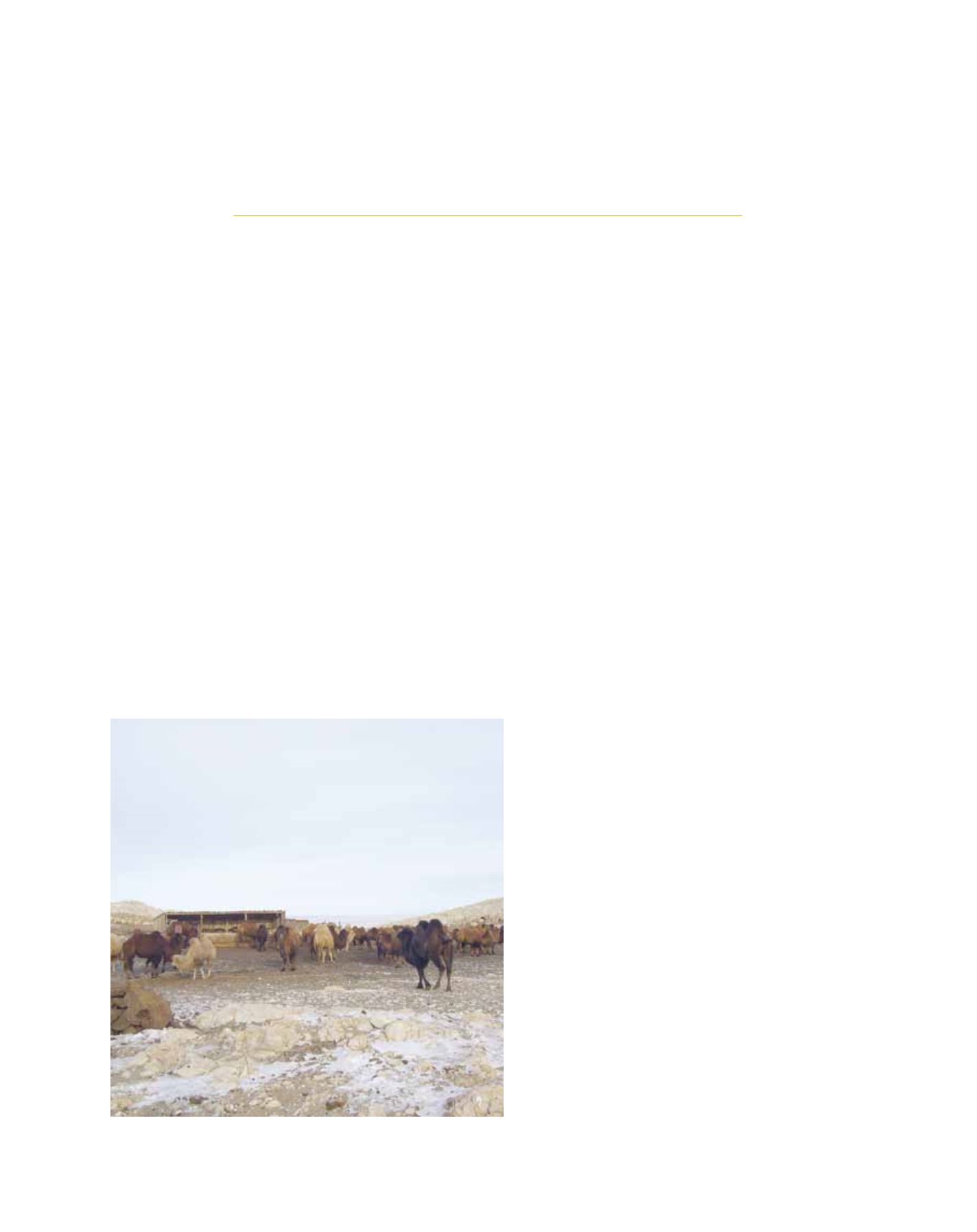

[
] 63
Climate information services
for herder families in Mongolia
National Weather and Hydrological Service, Mongolia
T
he people of Mongolia live under extremely harsh
weather and climate conditions. Their daily behaviour
is directly dependent on weather, therefore weather and
climate information are very important and hold significant
benefits for them.
Today, these people are facing many challenging issues due to
climate changes and the increase of greenhouse gases in the atmos-
phere, a phenomenon caused by human activity. In the last 70
years, the annual mean air temperature of Mongolia has increased by
2.1
0
C and annual precipitation has decreased by nearly ten per cent
between 1940 and 2011. This condition is causing dryness and inten-
sifying the severity and harshness of weather and climate compared
with previous years. One fact which exemplifies this change is that
the frequency of almost all types of atmospheric extreme events has
doubled in the last decade compared to the previous decade.
Under the influence of this climate change, the Mongolian climate
is becoming more severe and harsh with the risk of significant
impacts for the country’s citizens, especially rural communities and
herder families.
A
griculture
Currently in Mongolia, the agriculture sector
produces 20 per cent of the country’s gross domestic
product. Among them, the livestock sector accounts
for nearly 80 per cent of total agriculture production.
The livestock sector is based on a traditional nomadic
pasture system and a herder family’s livelihood is much
dependent and influenced by weather and climate.
Every year in summer and autumn, herder families
need to prepare for the oncoming winter and spring,
to prevent the loss of their livestock. To prepare for
winter, the conditions of the past summer in terms of
biomass and vegetation growth, and the coming winter
weather and climate outlook are essential information
for decision-makers at
soum
(small administrative
unit),
aimag
(province) and country level as they
plan the migration of herder families, prepare hay and
arrange other measures.
According to government resolution No. 190, which
considers measures to protect livestock from drought
and harsh winter (
zud
), an assessment of pasture
capacity must be carried out over Mongolia in August
every year. Using this information, the winter weather
and climate outlook is prepared and disseminated by
Mongolia’s National Weather and Hydrological Service.
This climate information is fundamentally important
for planning the following activities:
• Organizing the wintering-springing of livestock
• Balancing the use of pasture in an effective way
• Warning herder communities as early as possible
about warm harsh winters
• Assessing the main human factors influencing
pasture and grazing.
Long-term pasture monitoring in Mongolia has been
carried out every year since 2001, at 1,550 points across
the country using ‘line point intercept’ methodology.
Simultaneously, the number and type of livestock,
area of pasture in hectares and the number of days the
pasture is expected to be used is gathered from the
monitoring points in order to assess pasture capacity.
For instance, in the winter-spring of 2011-2012 the
summer condition was normal over 70 per cent of the
country, with semi-drought in 25 per cent and drought
in 5 per cent. Generally, summer conditions were quiet
good and the carrying pasture capacity was enough for
livestock wintering. An exact assessment showed that
Typical herders wintering, Tsogt-ovoo soum of Umnugobi aimag, 2008
Image: National Weather and Hydrological Service, Mongolia
















